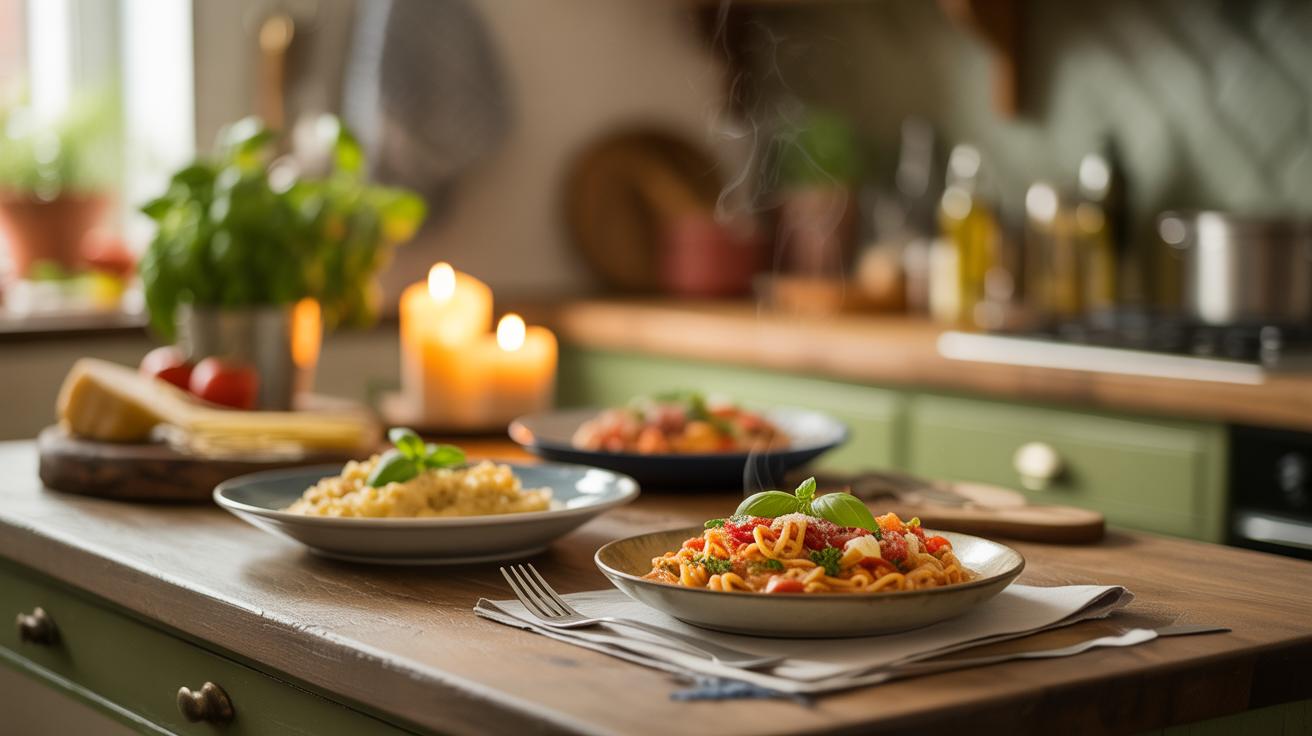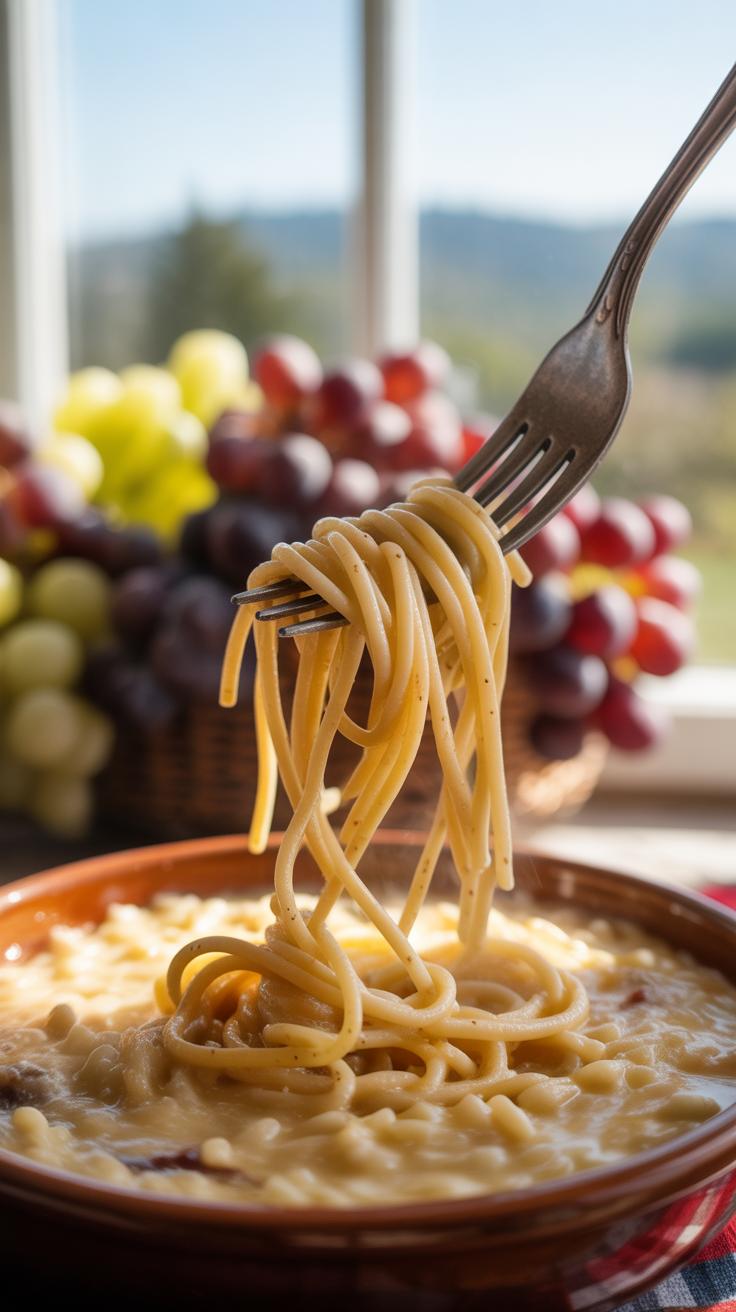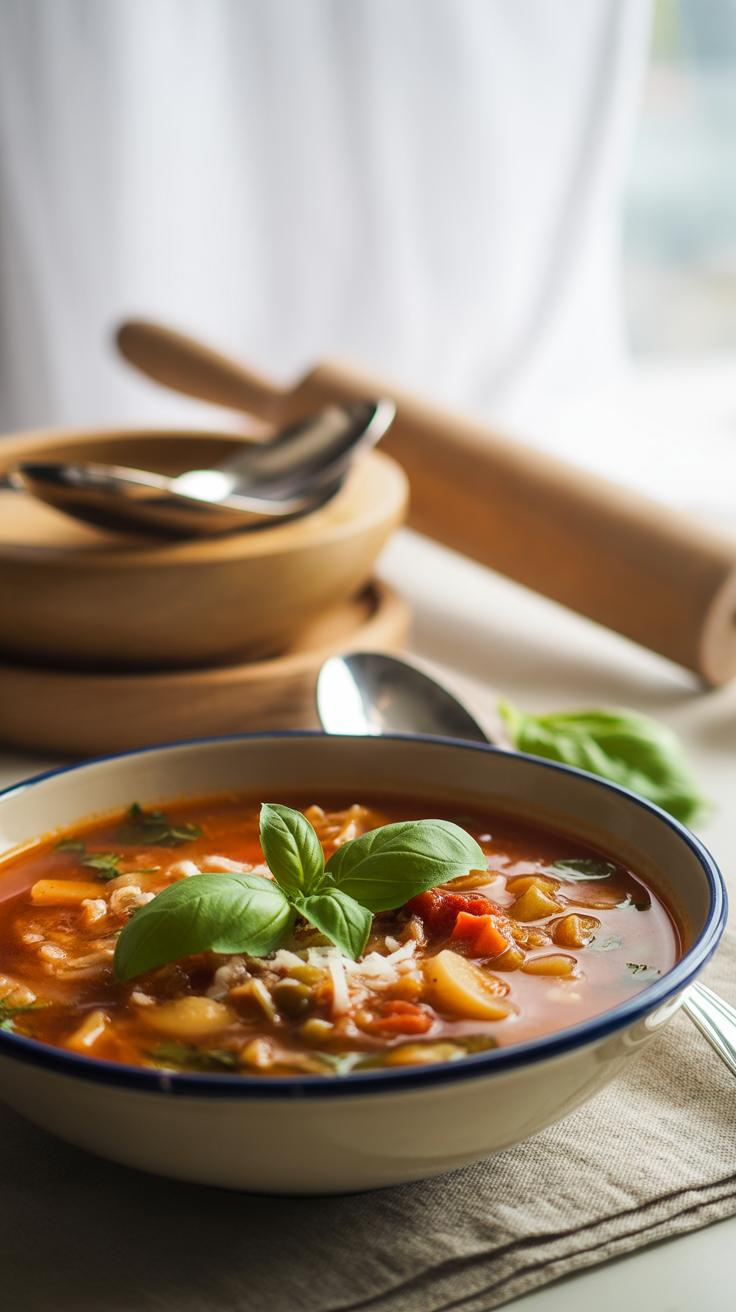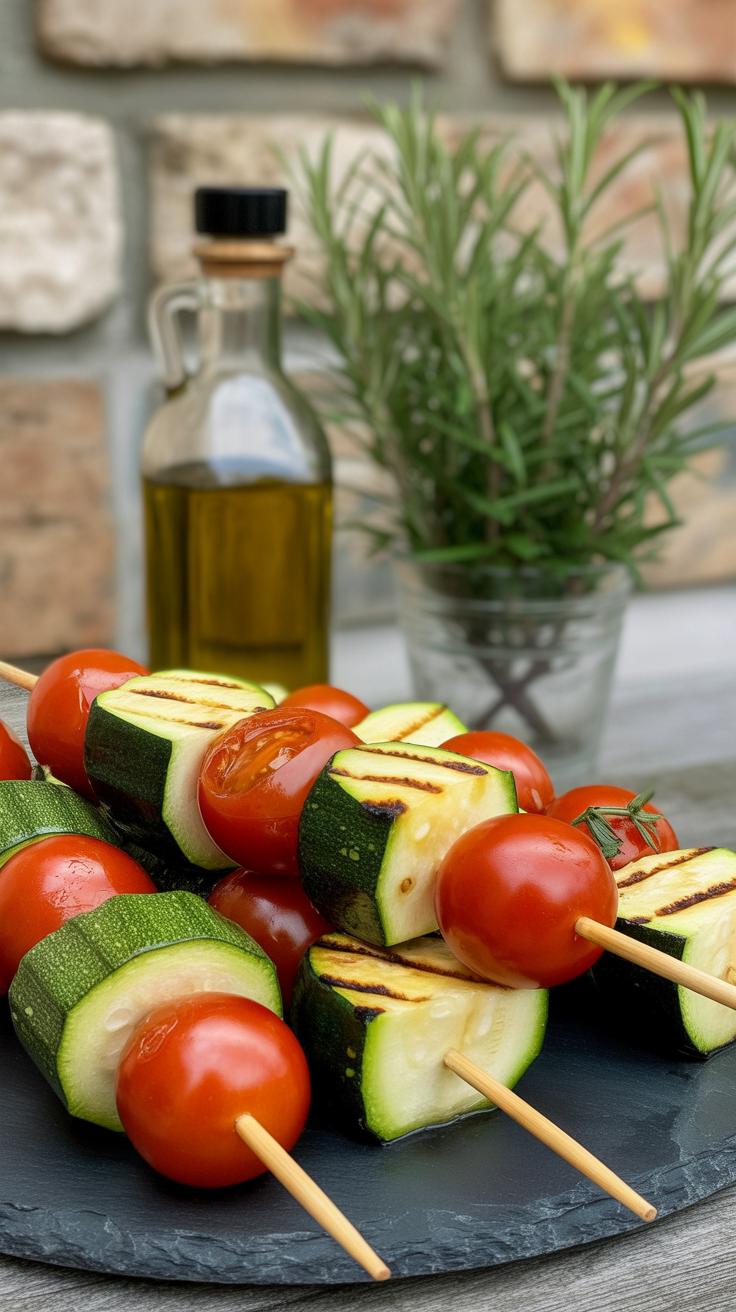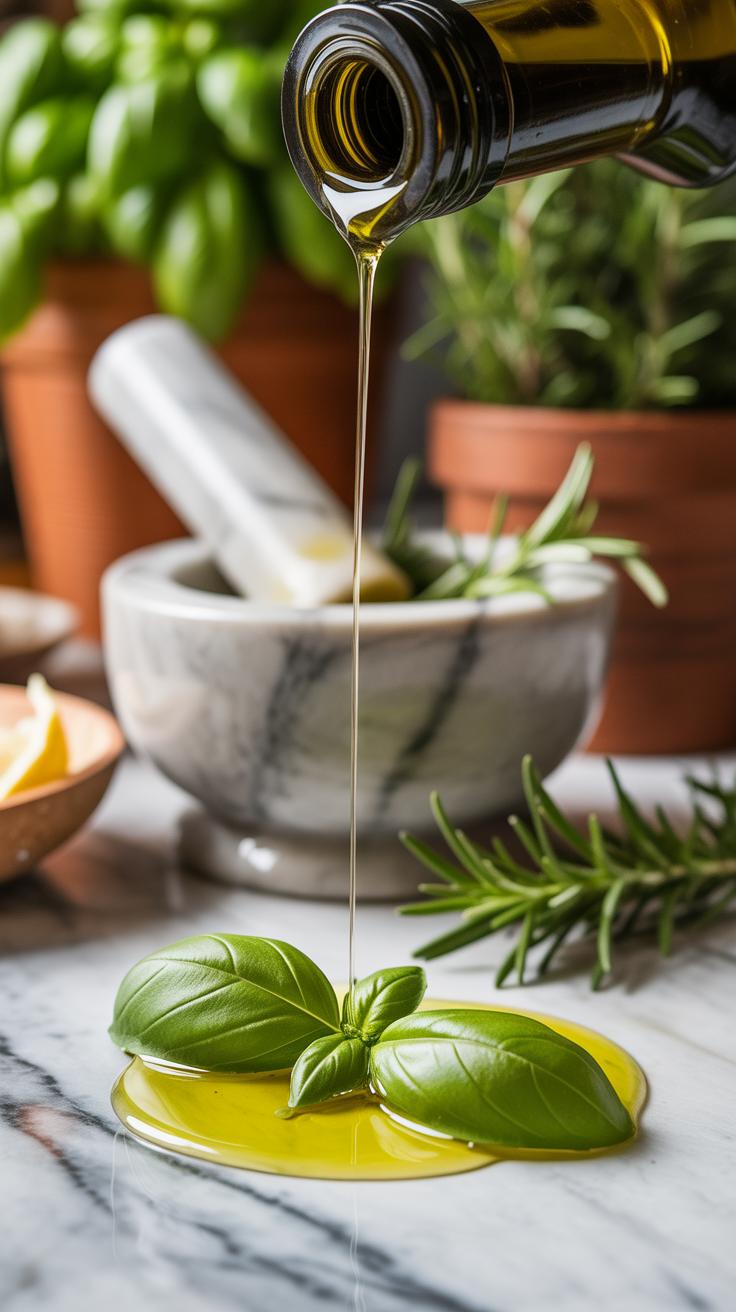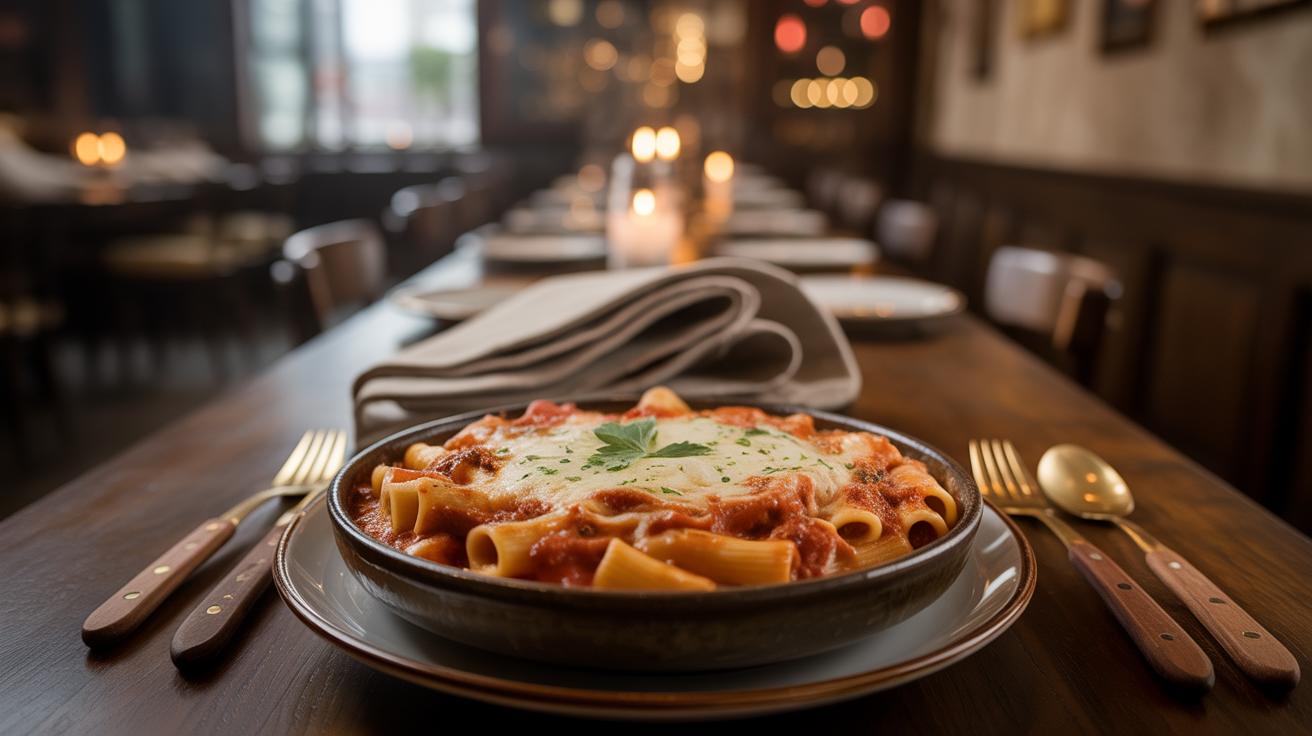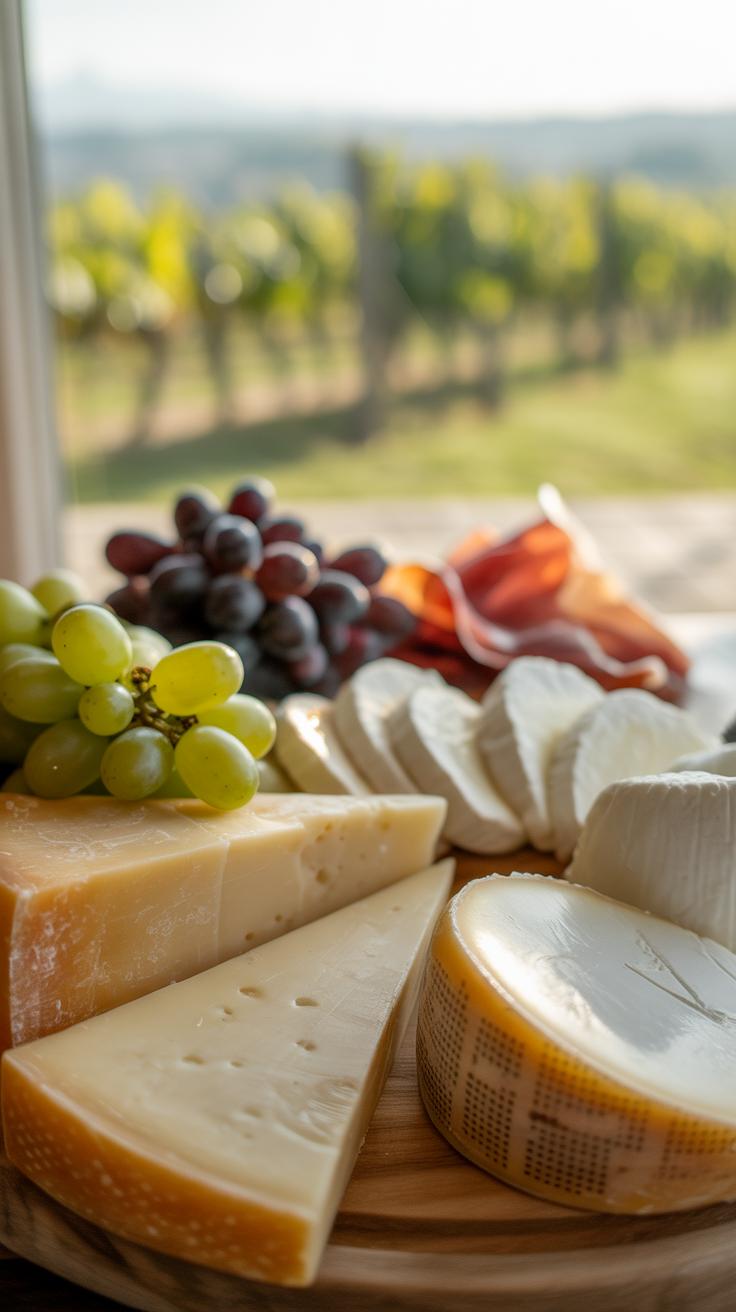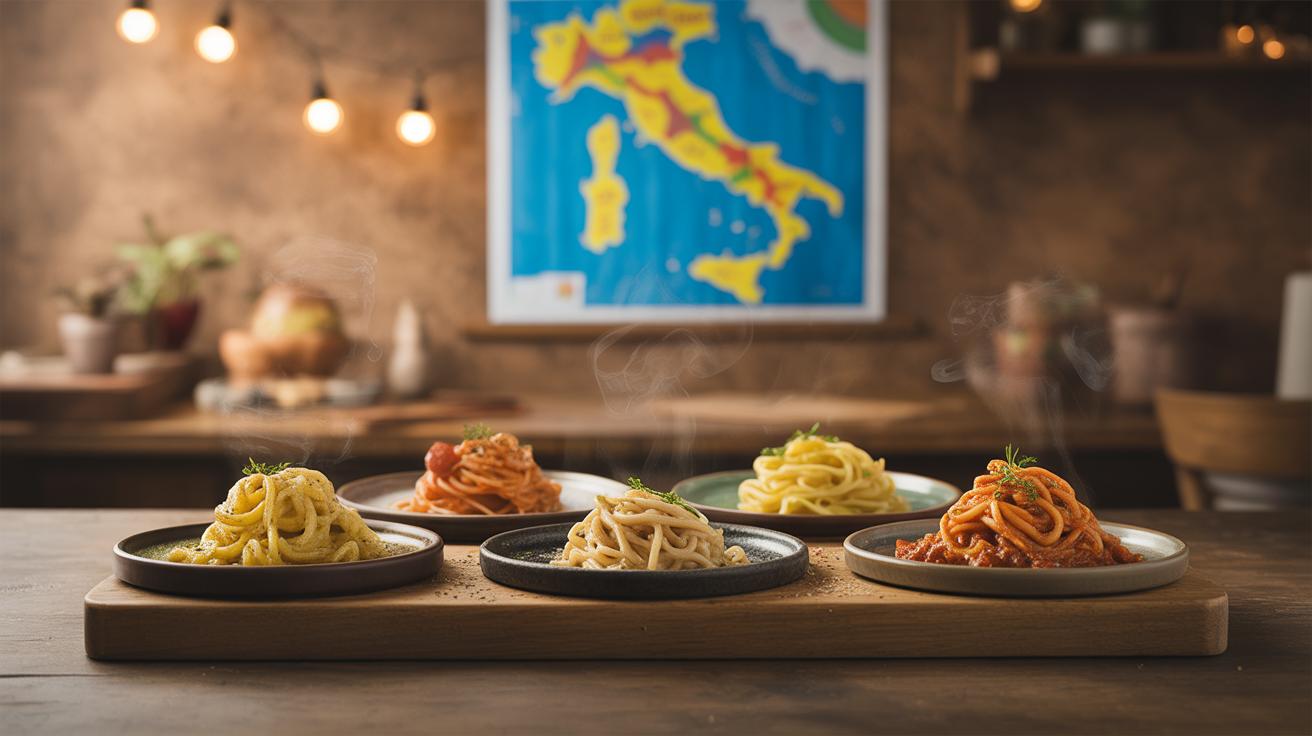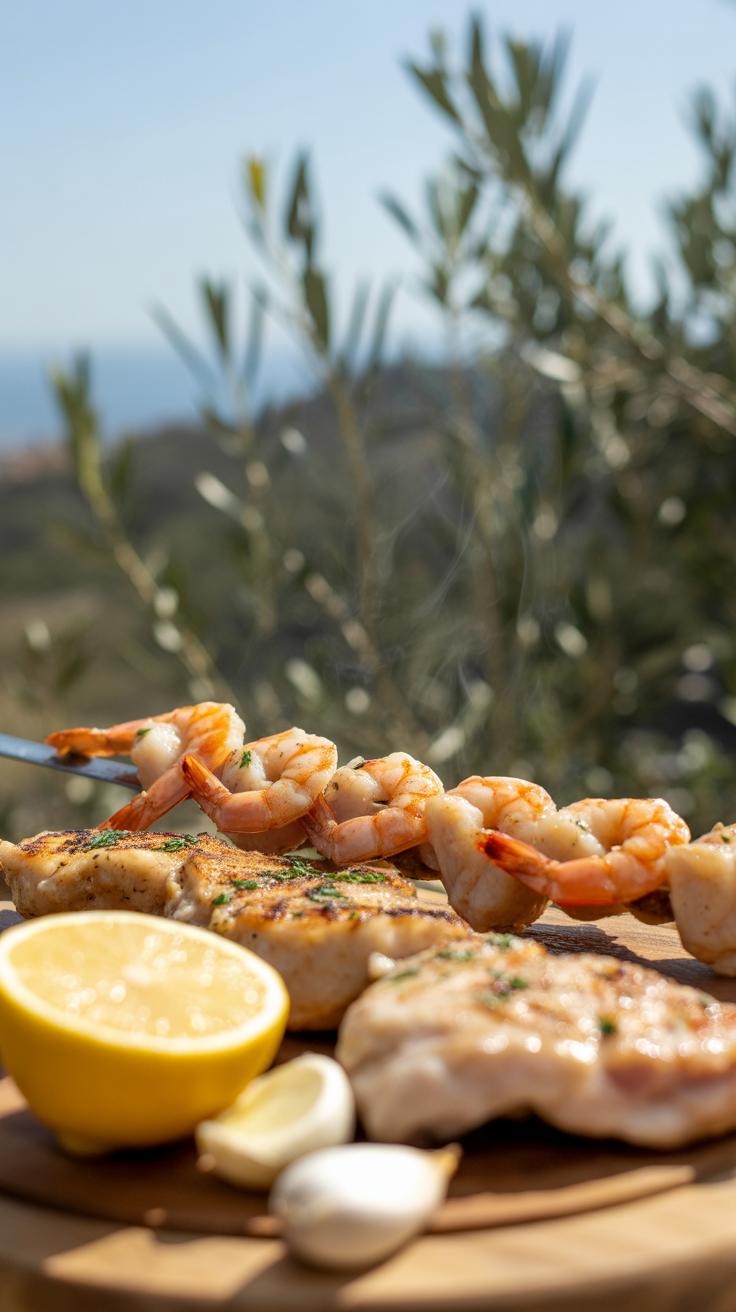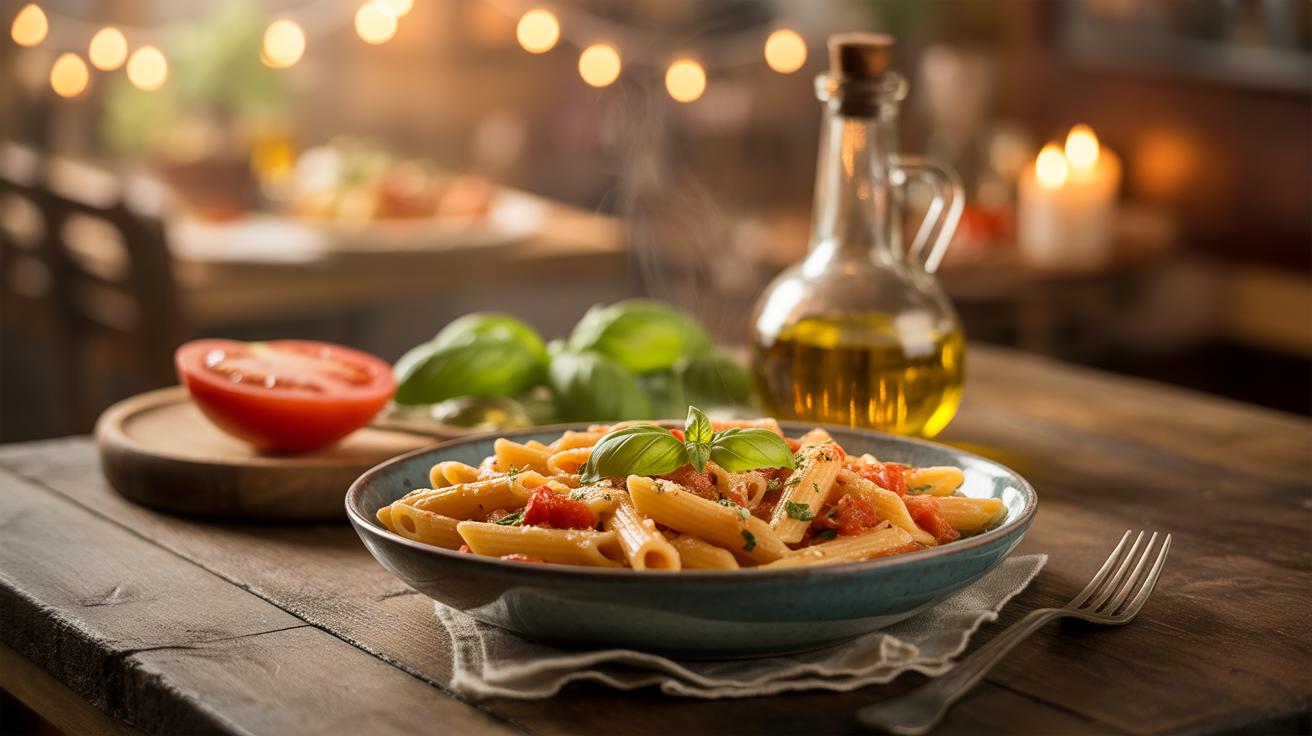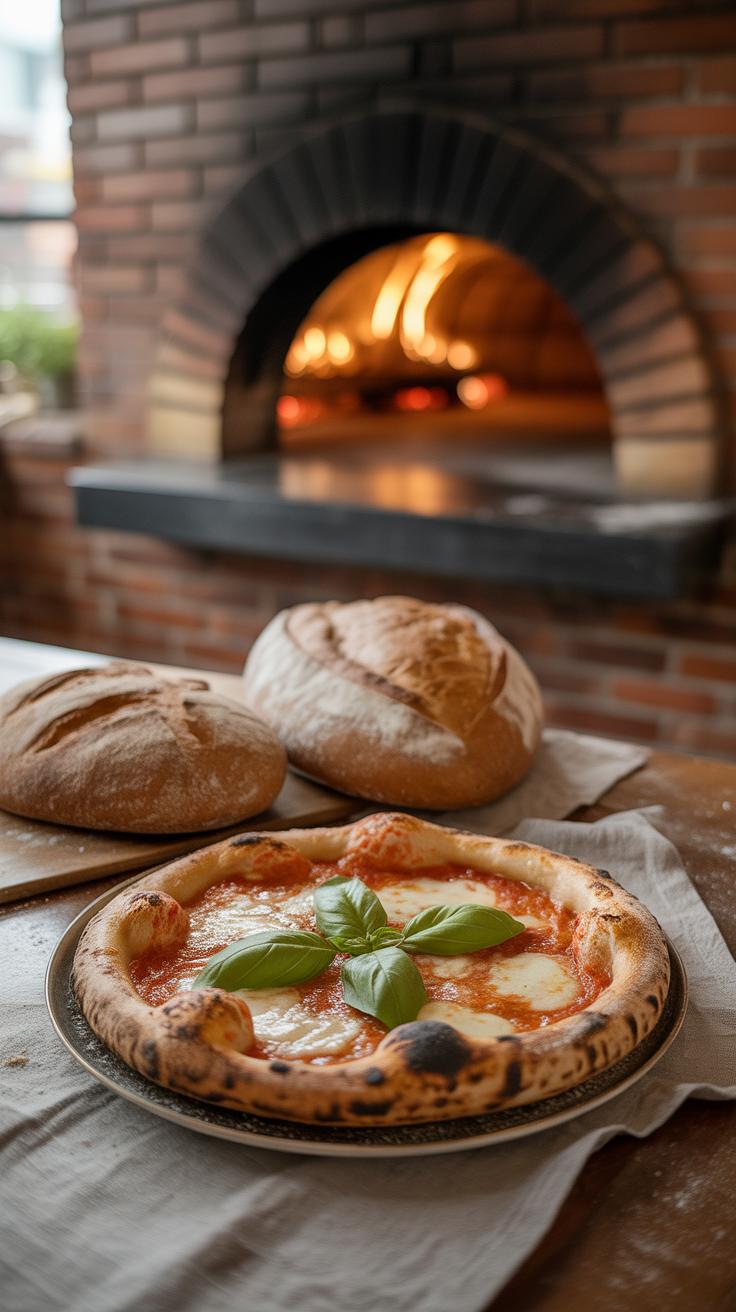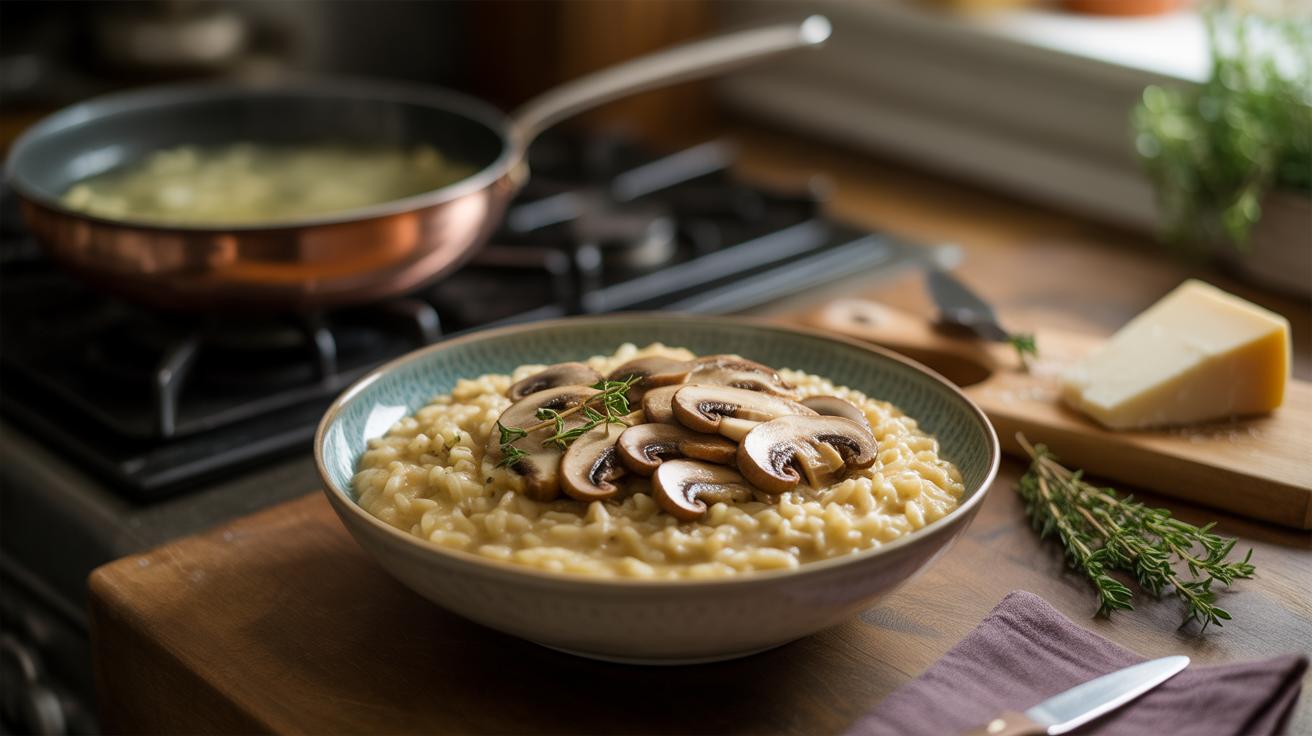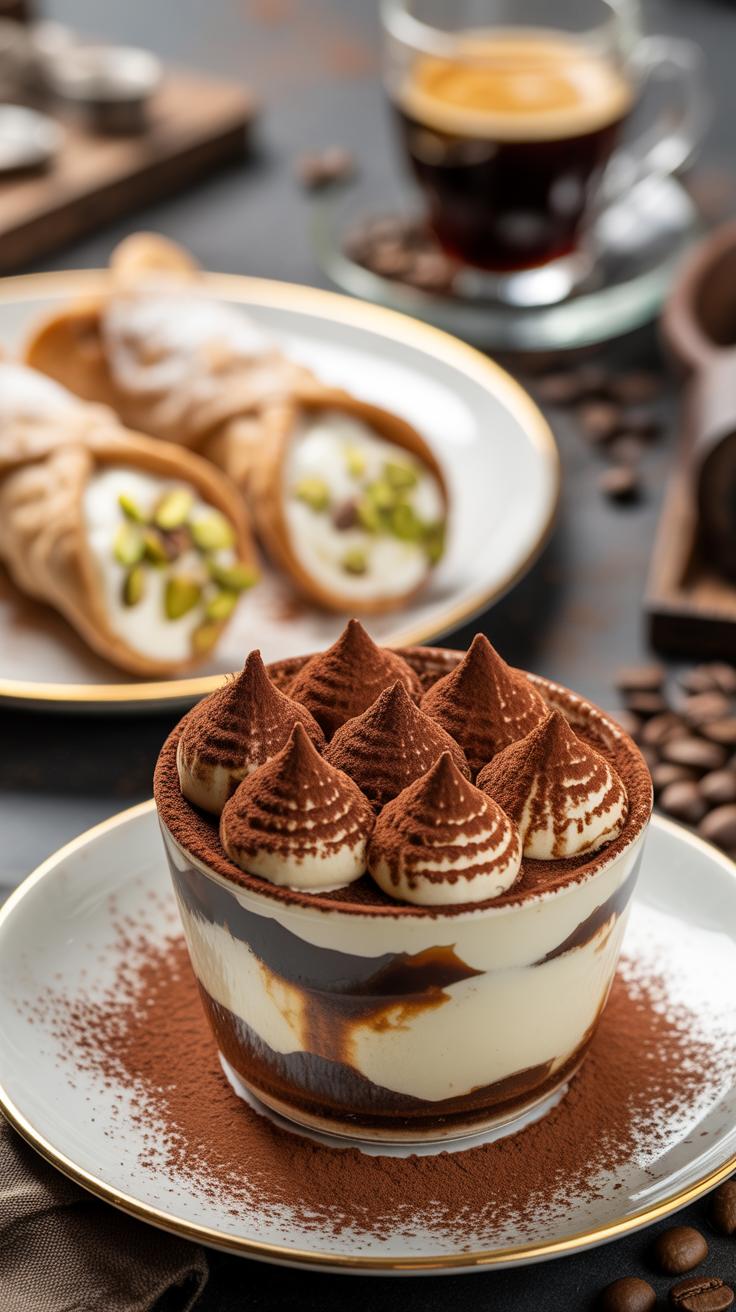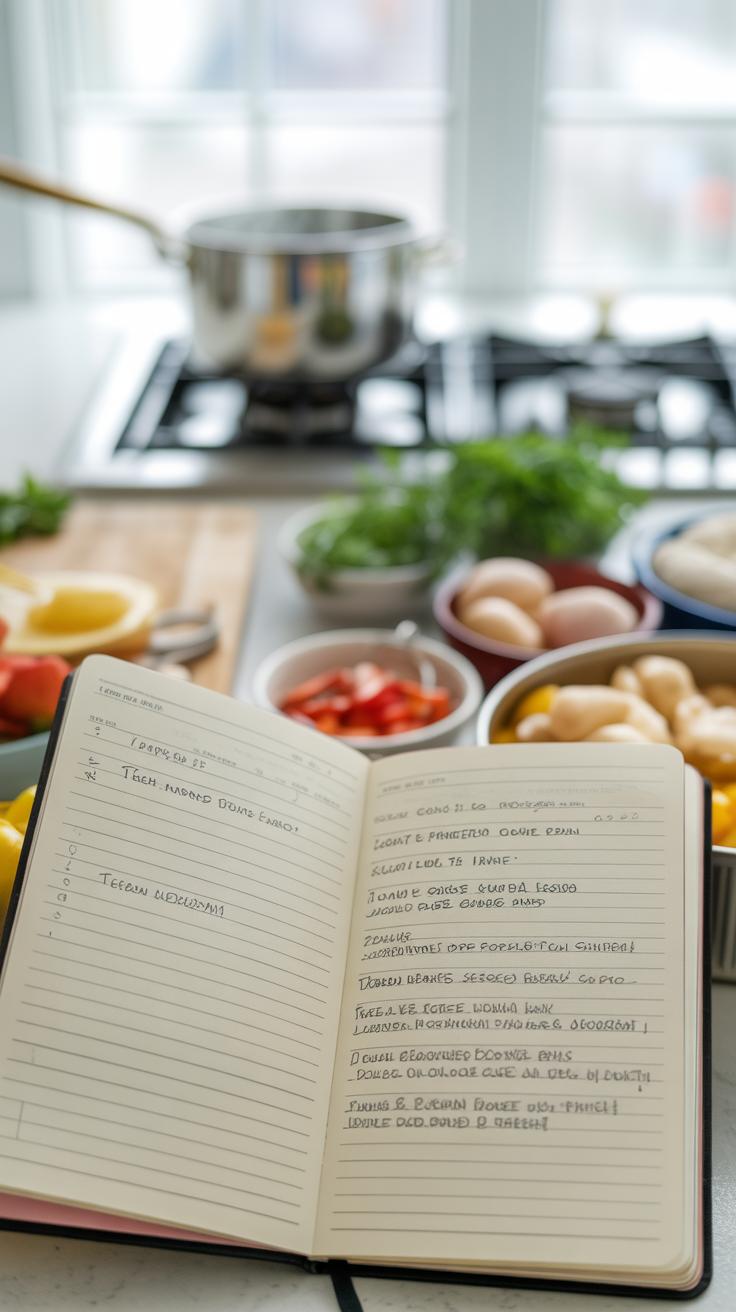Introduction
If you want to enjoy a cozy night with a delicious Italian dinner, you have many easy options to try. Italian meals are loved worldwide for their fresh ingredients and simple cooking methods. These recipes often use just a few key ingredients to bring out big flavors, perfect for busy weeknights.
This article will explore easy Italian dinner ideas that anyone can make at home. From classic pasta and risotto dishes to hearty soups and tasty sides, you will find practical recipes and tips to create a warm, satisfying supper in no time.
The Heart of Italian Dinner Pasta and Risotto
Pasta and risotto are often at the center of Italian dinners, bringing comfort and flavor with each bite. They’re more than just foods; they shape the rhythm of the evening, creating a sense of warmth around the table. Pasta, with its countless shapes and textures, adapts well to quick sauces and makes dinner feel homey without hours in the kitchen. Risotto, on the other hand, demands a bit more attention but rewards with a creamy richness that can be surprisingly straightforward once you get the hang of it.
Popular pasta types you might already know include penne, spaghetti, and fusilli. Penne pairs well with chunky vegetables or meat sauces, holding sauce inside its hollow tubes. Spaghetti fits lighter sauces, like a simple tomato or garlic oil. Fusilli’s spirals trap thick, hearty sauces beautifully. For quick cooking, pick fresh pasta when you can; it only needs a few minutes to cook. Dry pasta takes a bit longer but can be great if you plan ahead.
When it comes to risotto, the base involves slowly cooking Arborio rice with broth stirred in gradually, coaxing out that lovely creamy texture. A simple recipe might use onions, garlic, broth, white wine (optional), Parmesan, and butter. The process is a bit like slow cooking with love—it needs your attention but no special skills. The result? A dish that feels fancy but is surprisingly easy, perfect for winding down after a busy day.
Hearty Soups That Warm Your Italian Table
Italian dinners often include soups that feel like a full meal themselves. Minestrone stands out here—it’s a vegetable-packed, flexible soup that you can pull together quickly with whatever’s in your fridge. Typically, it has beans, pasta or rice, and a mix of seasonal veggies like zucchini, tomatoes, carrots, and celery. What’s great is that you don’t have to be exact; if you only have green beans and spinach, that works just as well. A simple base of onion, garlic, and a good broth, simmered gently, brings it all together.
For a basic minestrone, start by sautéeing onion, carrot, and celery until soft. Add diced tomatoes, broth, and your choice of beans—cannellini or borlotti. Toss in some small pasta or rice near the end, along with any chopped leafy greens. Give it some time to soften, and it’s ready. You can make a big pot and have leftovers for a couple of nights, which is perfect for busy evenings.
Quick Broth-Based Soups
If minestrone feels like too much effort sometimes, there are lighter Italian soups that you might like better on a hectic weeknight. Think about something broth-based with fresh herbs, perhaps some simple pasta like ditalini or even just a handful of white beans for protein. The broth can be as straightforward as chicken or vegetable stock with a splash of olive oil and plenty of fresh parsley or thyme.
These quick soups often come together in less than 20 minutes. A trick is to keep precooked beans or leftover pasta handy. You heat the broth with herbs and garlic, then add your pasta or beans right before serving. Sometimes, I throw in a beaten egg to swirl it into a light, silky finish. It’s simple but satisfying enough, especially when paired with crusty bread.
Vegetables and Sides to Brighten Your Meal
Italian meals often hinge on simple sides that bring out the best in your main dishes like pasta, risotto, or soups. Sometimes, just a fresh salad or grilled vegetables can lift the whole dinner without much fuss. When you think about pairing veggies, it’s worth trying a few go-to easy ideas that don’t require a lot of time or elaborate steps.
Fresh Italian Salads
Let’s start with salads. A handful of baby arugula or mixed greens dressed with good olive oil and a splash of lemon juice works surprisingly well. Sometimes, less is more—just tossing together thinly sliced tomatoes, fresh basil leaves, and a pinch of salt is refreshing and almost feels like a cheat, but it’s truly authentic. If you want to mix it up, try adding some slivers of red onion or a bit of shaved parmesan.
Here’s a quick salad idea:
- Mixed greens (spinach, arugula, radicchio)
- Cherry tomatoes sliced in half
- Fresh basil torn by hand
- Extra virgin olive oil
- Fresh lemon juice or balsamic vinegar
- Sea salt and cracked black pepper
This combo fits just about any Italian dish and can be on the table in minutes. It’s easy to see why it’s a classic!
Grilled and Roasted Vegetables
As for grilled and roasted veggies, they add a smoky, savory element that contrasts nicely with softer dishes. Think zucchini, eggplant, bell peppers, maybe even some mushrooms. I find that slicing them into uniform pieces helps them cook evenly. A drizzle of olive oil, salt, and a sprinkle of dried oregano or thyme is often enough—though a dash of garlic powder wouldn’t hurt, if you like.
Grilling outdoors if you can, or using a grill pan indoors, gives those perfect char marks that look as good as they taste. Roasting in the oven is more hands-off: just spread them out on a sheet, toss lightly with seasoning, and check every now and then until they’re tender and golden.
Occasionally, I debate whether to roast or grill—roasting feels a bit easier, but grilling adds a flavor you can’t quite replicate.
Using Herbs and Olive Oil to Boost Flavor
Italian cooking leans heavily on fresh herbs and good olive oil to turn simple meals into something memorable. If you ever wondered why a basic tomato sauce or a plate of pasta can suddenly feel special, it’s often because of these two elements working together.
Best Herbs for Italian Cooking
Basil is probably the most famous—its sweet, slightly peppery aroma brightens sauces and salads alike. Think of caprese salad or a quick pesto; basil’s brightness cuts through richer flavors. Oregano offers a warmer, earthier note, perfect for rustic dishes like pizza or tomato-based sauces. Rosemary is tougher, a little piney, best for roasting vegetables or meats. Using these herbs fresh adds a different dimension than dried, but dried oregano, for example, can work fine in a pinch. A trick I sometimes use: tear fresh basil leaves just before serving to keep their vibrant flavor alive.
Choosing and Using Olive Oil
Not all olive oils are created equal. There’s extra virgin olive oil, which is cold-pressed and has a more robust flavor, ideal for finishing dishes—drizzling on salads, grilled veggies, or warm pasta. Light or pure olive oils tend to have a milder taste and higher smoke points, so you might choose them for sautéing where you don’t want the oil’s flavor to overwhelm.
One thing I’ve learned trying different oils: a good bottle can elevate even the simplest meal. Experiment with quality extra virgin oils from different regions—Tuscan oil often has a peppery kick, while oils from southern Italy may be milder. Just a splash can add richness and depth. Don’t be afraid to taste your oil like a wine and decide how it fits your recipe.
When cooking, add olive oil early to coax out flavors or wait until the end to preserve its freshness. Sometimes I drizzle a bit of oil over warm dishes just before serving because it brings a silky texture and aroma that feels like a quiet celebration on your plate.
Italian Cheeses to Complete Your Dinner
Cheese plays a central role in Italian dinners. It’s not just a topping—it shapes the whole meal’s character. You might think of cheese as an afterthought, but in Italian cooking, it brings depth and richness, balancing flavors in surprising ways. Parmesan, mozzarella, and ricotta each offer something different, making them great staples to keep on hand.
Grated and Shredded Cheeses
Parmesan is the classic grated cheese. Its salty, nutty punch adds instant flavor and texture when sprinkled over pasta, soups, or roasted veggies. Pecorino Romano can do the same with a sharper, more assertive taste. Grated cheeses melt evenly and lend a subtle crunch on top if baked. You might try a quick toss of parmesan over a simple tomato dish. It really wakes things up and gives you that familiar Italian finish.
Fresh Cheese Uses
Fresh cheeses like mozzarella and ricotta work differently. Mozzarella’s milky, soft texture brightens salads or melts effortlessly on pizzas and casseroles. When I’m in a hurry, slicing fresh mozzarella on a salad with tomatoes and basil feels—and tastes—effortless. Ricotta is a bit more versatile than you’d expect. Dollop it into warm pasta dishes or blend it with herbs for a creamy sauce. It adds moisture and dimension without overpowering other ingredients.
Simple Italian Meat and Seafood Options
When you want something quick but still distinctly Italian, meat and seafood dishes offer a solid, satisfying option. Italian cooking often keeps things straightforward—just a few ingredients, some olive oil, garlic, and herbs—to let the natural flavors shine. Chicken, sausage, and fish all take well to this style.
Quick Chicken and Sausage Dishes
Chicken cooks fast and pairs wonderfully with Italian seasoning. For example, sautéing chicken breasts with garlic, rosemary, and a splash of white wine can turn simple protein into a cozy supper without fuss. Or try skillet-cooked Italian sausage slices tossed with peppers and onions—done in about 15 minutes but tastes like you spent hours.
Using pre-cooked or smoked sausage reduces time further, and you can always add canned tomatoes to create a quick sauce. The seasoning is usually classic: oregano, basil, maybe some chili flakes if you like a bit of heat. I find that even a pinch of fennel seed can make sausage dishes feel more authentic, though it’s not always necessary.
Easy Seafood Recipes
Seafood in Italian cooking is rarely complicated. A simple pan-seared fish fillet with lemon and capers can feel special but takes hardly any work. Shellfish like shrimp or clams quickly absorb garlic, parsley, and olive oil, making a fast, fragrant dinner.
Poaching fish in tomato sauce, known as “pesce all’acqua pazza,” is another easy approach. It lets you simmer fish gently while infusing it with flavors from garlic and cherry tomatoes. If you’re pressed for time, just grilling a firm fish like swordfish or tuna with a brush of olive oil and herbs can be done in minutes.
Seafood demands a little attention but never needs to be complex. Sometimes the simplicity is what makes these dishes stand out, especially after a long day when you want dinner ready fast but still comforting.
Bread and Pizza as Cozy Italian Dinners
Italian dinners often revolve around bread and pizza, two staples that feel both comforting and easy to prepare, especially when you want something quick. Pizza doesn’t always mean complicated toppings or long preparation. Sometimes, a simple Margherita or even a white pizza with just garlic and olive oil can be surprisingly satisfying. Bread, on the other hand, isn’t just a side—it can be the star paired with flavorful drizzles or spreads.
For homemade pizza, you don’t have to roll out dough for hours. Using store-bought pizza dough or even pre-made crusts saves a lot of time. Top with crushed tomatoes, fresh mozzarella, basil, and a sprinkle of salt. Bake at a high temperature for a crisp crust and melty cheese. You can get creative here: add sautéed mushrooms, olives, or thinly sliced prosciutto for a fast upgrade.
Italian bread varieties also hold a special place. Think of ciabatta—airy with a perfect crust—or focaccia, dotted with rosemary and olives. Serve them warm, with good olive oil for dipping or alongside soups or stews. Often, a piece of bread soaked in olive oil and balsamic vinegar is all you need to make a simple meal feel complete.
Italian Desserts to Finish Your Night
Ending an Italian dinner with something sweet can feel like the perfect way to wrap up the evening. Classic treats like tiramisu, gelato, and lemon-based desserts bring a satisfying close without being overly complicated to prepare. Tiramisu, for example, is a no-bake favorite. It layers coffee-soaked ladyfingers with a creamy mixture of mascarpone, eggs, and sugar—simple but rich. I’ve tried making it on a busy weeknight, and it really works well when you let it chill while you eat.
Gelato offers something lighter yet still indulgent. Unlike regular ice cream, it’s lower in fat and churned slower, giving it a silky texture that almost melts instantly. You can buy it pre-made, but if you’re adventurous, you can whip up a quick fruit-flavored gelato with just a blender and an ice cream maker—or even freeze some blended fruit for a similar effect.
No-Bake Desserts
No-bake options are perfect when you want to skip the oven but still impress. Tiramisu is the classic, but there’s also panna cotta, a creamy, gelatin-set dessert that’s surprisingly easy. It takes just cream, sugar, and vanilla, and you can leave it to set in the fridge while you finish dinner. Another simple idea is a lemon ricotta parfait—layer ricotta cheese mixed with honey and lemon zest with crushed amaretti cookies or biscotti. It comes together fast, and you don’t even need to turn on the stove.
Fruit and Citrus Sweets
Lemon and other citrus fruits play a big role in Italian desserts, especially when you want something fresh and light. Lemon granita is an icy, refreshing treat made using just lemon juice, sugar, and water. It’s easy, bright, and perfect for cutting through the richness of a pasta dinner. Or try a simple lemon olive oil cake, which feels rustic but comes together quickly and uses pantry staples. If you prefer something even simpler, just sliced fresh fruit drizzled with a touch of honey and a sprinkle of chopped nuts offers a sweet finish without fuss.
Tips for Planning and Cooking Italian Weeknight Suppers
When the week gets busy, planning an Italian dinner can feel a bit tricky—but it doesn’t have to be. Picking the right ingredients ahead of time really helps. Think about staples like canned tomatoes, dried pasta, fresh herbs, and good olive oil. These keep well and are the backbone of many simple Italian meals. I usually keep garlic and onions ready to hand; they add flavor without much fuss.
Storing fresh ingredients properly makes a difference too. For example, basil wilts fast, so I often put it in a glass of water like a bouquet, which surprisingly keeps it fresh longer. Mozzarella wrapped in its liquid in a sealed container stays soft and tasty for days.
When it comes to cooking, quick methods can save your sanity. Try multitasking: start boiling pasta while chopping veggies or sautéing garlic. I like using a food processor to speed up chopping—it’s not cheating, just smart. Time spent prepping is often the slowest part, so anything that shaves minutes feels like a win.
Ask yourself: can this meal simmer while I prepare a side salad? Could the oven finish the dish while I tidy up? Juggling small steps helps dinner come together without stress, and you might even enjoy the process more than expected.
Conclusions
Enjoying an Italian dinner doesn’t have to be complicated. With just a few fresh ingredients like pasta, vegetables, and good olive oil, you can create delicious meals that bring comfort and joy. These easy ideas show you how to make tasty Italian dishes that fit your weeknight schedule.
Cooking these meals lets you connect with the tradition of Italian home cooking, which values simple flavors and quality ingredients. By trying these recipes, you’ll bring warm, cozy dinners to your table and enjoy the true taste of Italy any night of the week.

